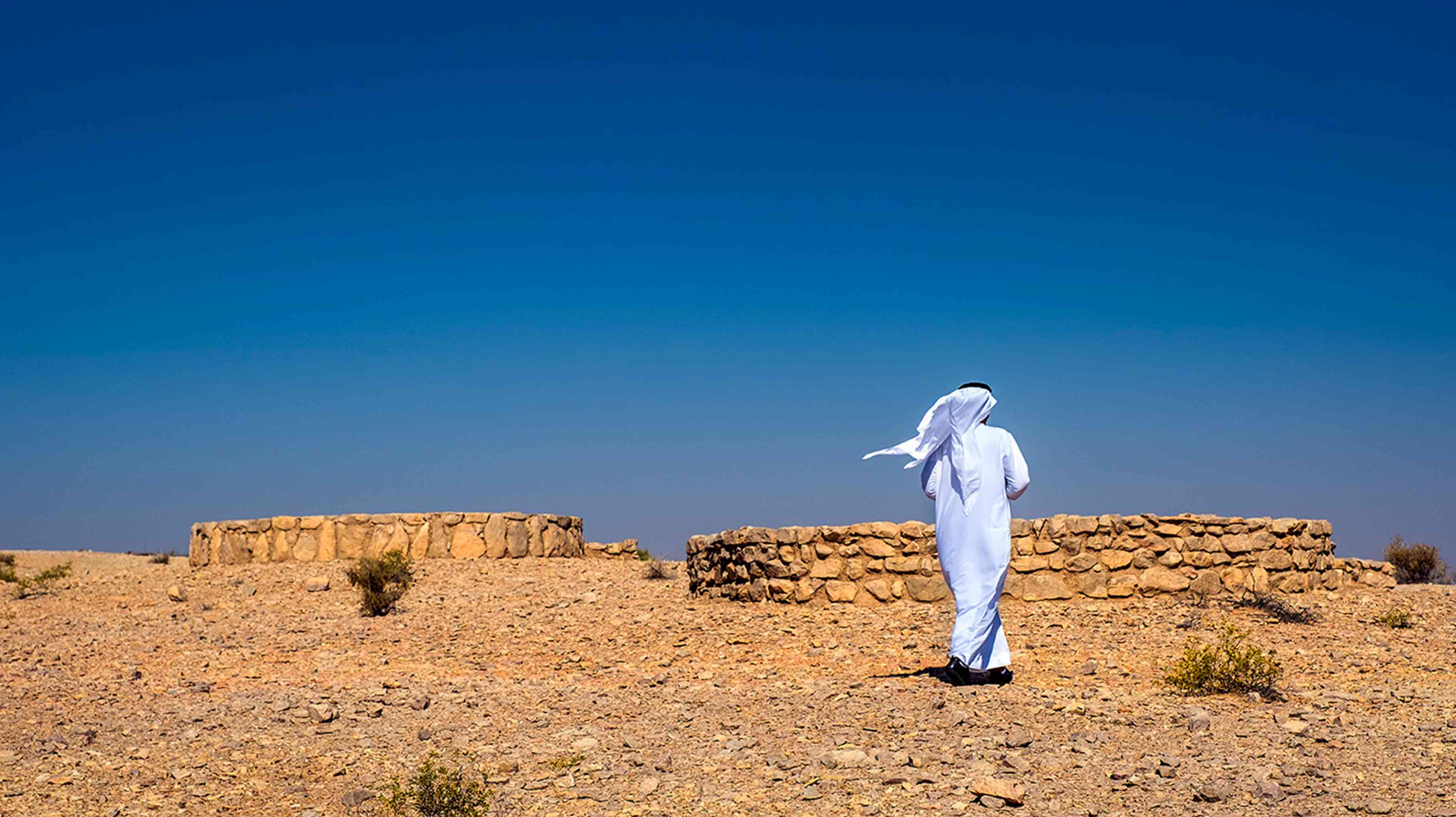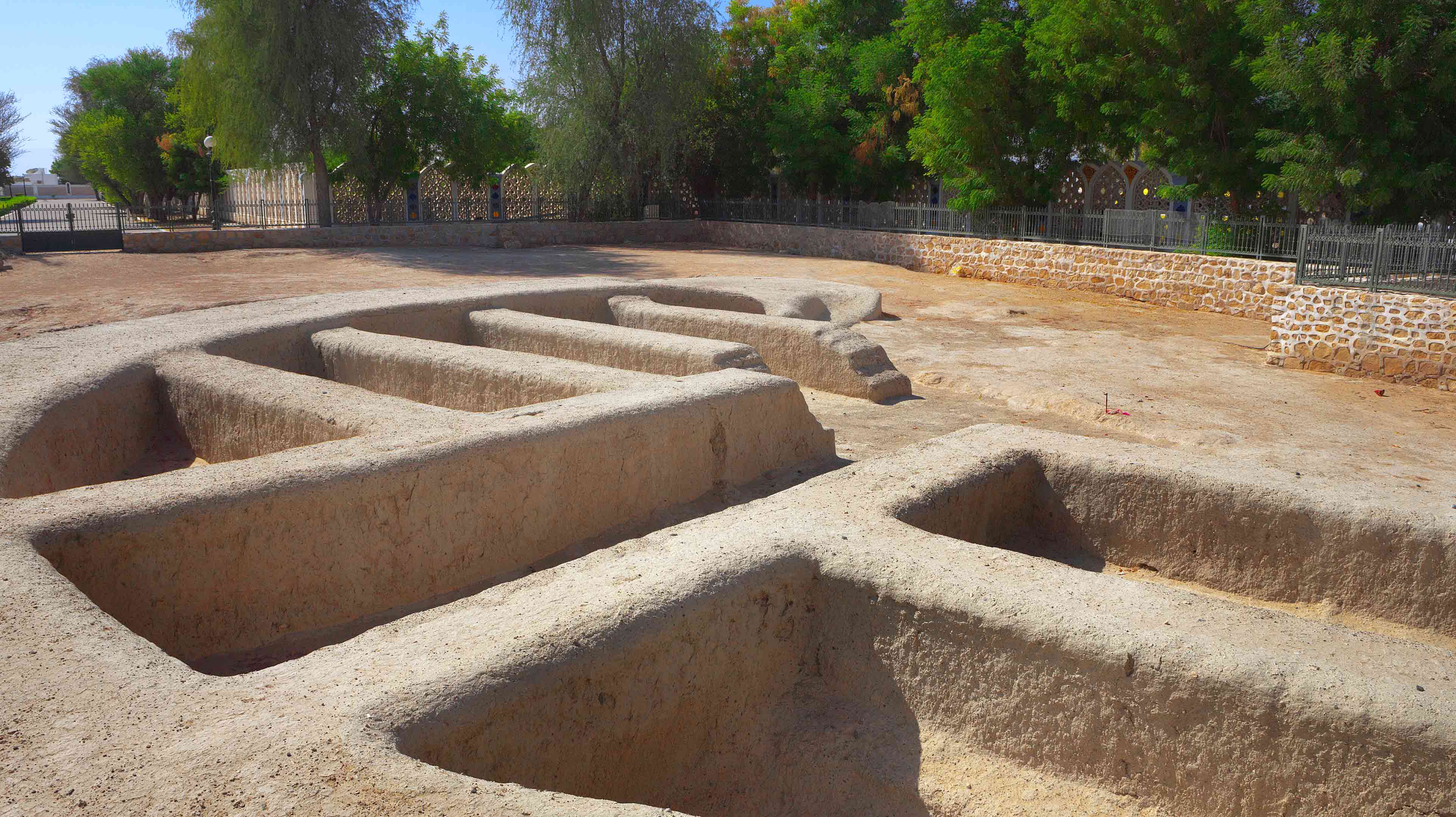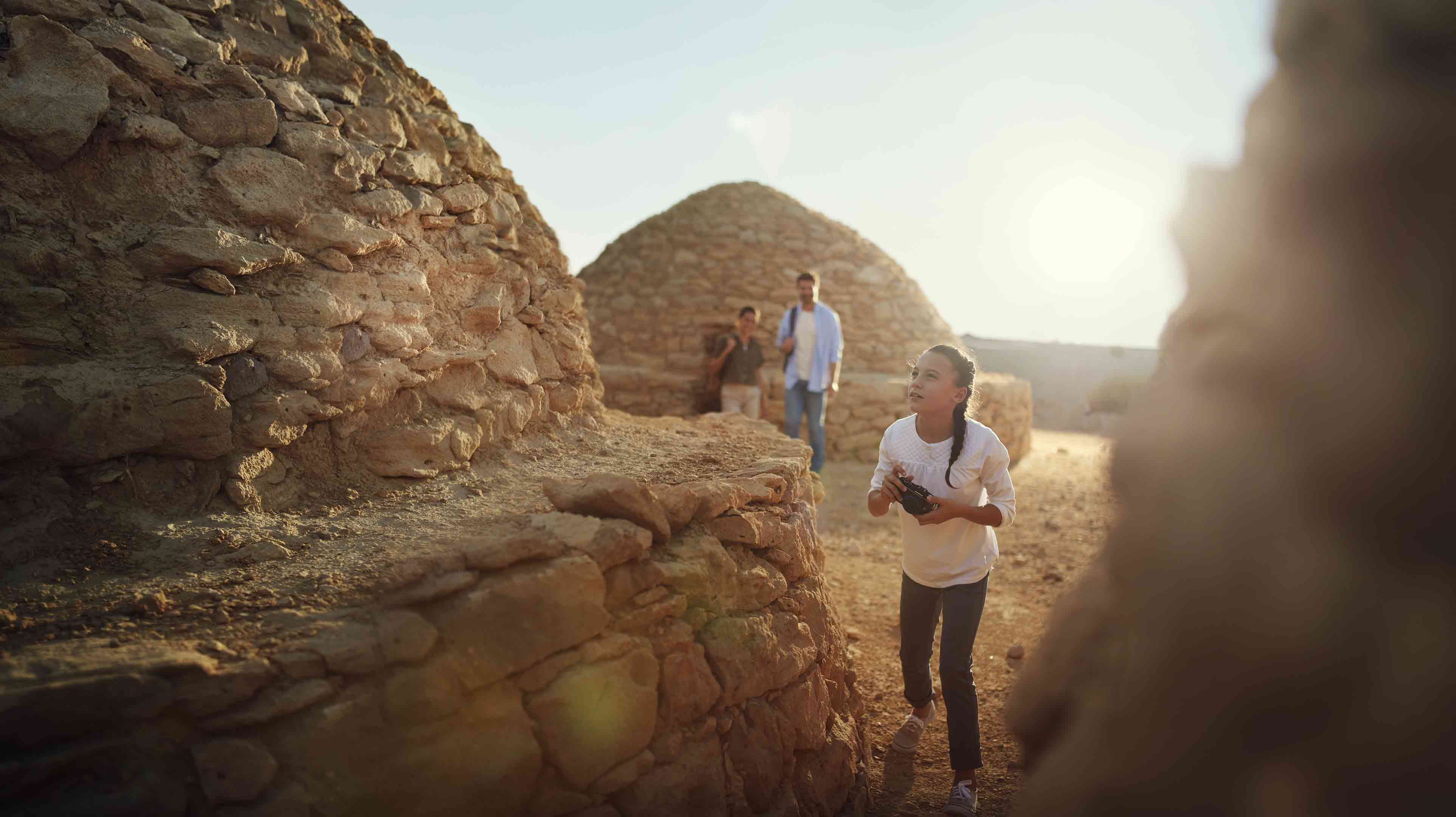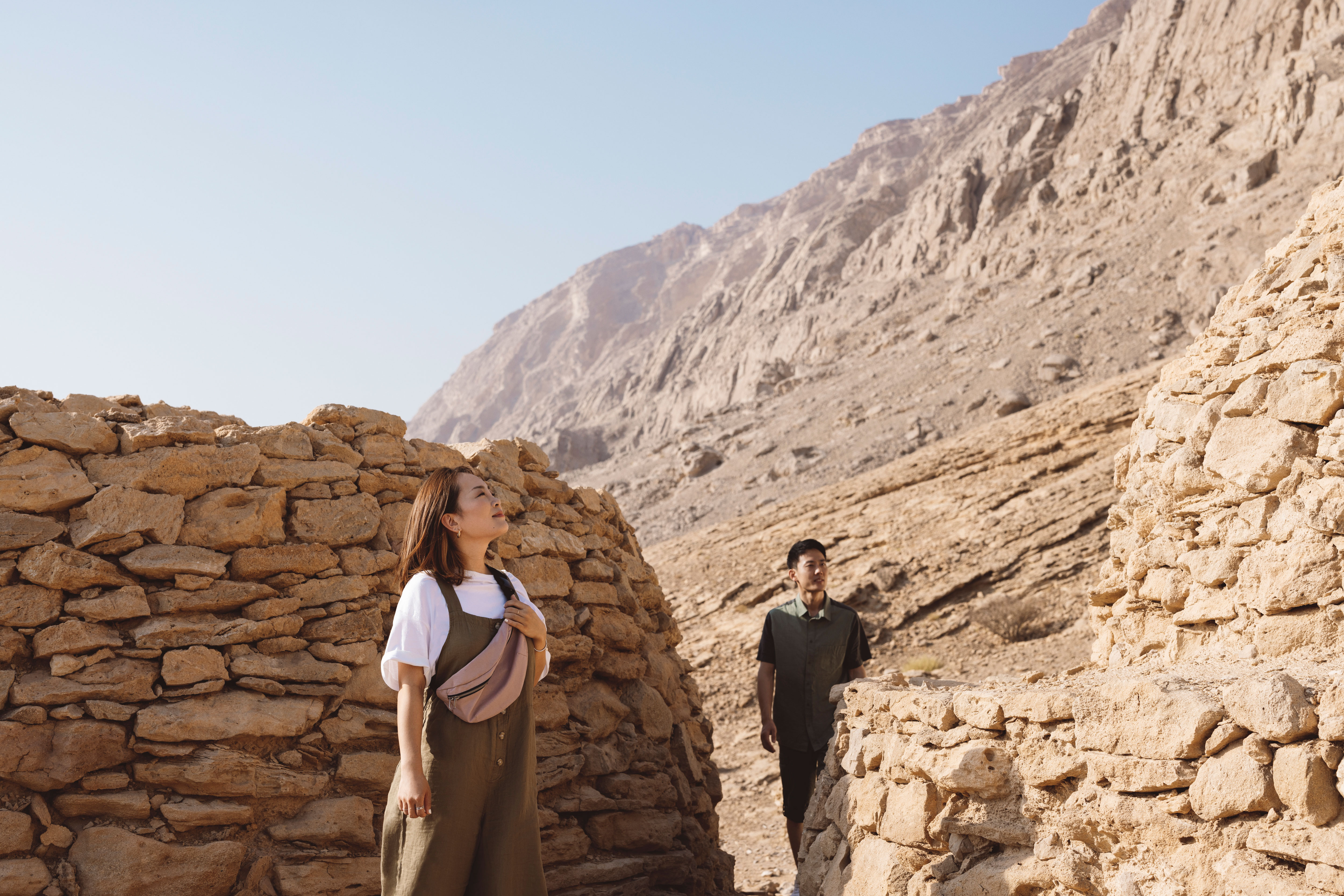Voir tout
Sites classés au Patrimoine mondial de l'UNESCO
À différents endroits, Al Aïn
Jadis une oasis verdoyante vitale pour les caravaniers qui se rendaient des É.A.U à Oman, Al Aïn, dont le nom signifie « le Printemps », est une cité luxuriante et patrimoniale classée au Patrimoine mondial de l'UNESCO. C'est également là où se trouve le plus ancien établissement humain habité au monde.
Classés par l'UNESCO comme sites culturels, Al Aïn comptent six oasis et les sites archéologiques de Bida bint Saud, Jebel Hafit et Hili. Ces anciens sites incroyables reflètent chacun l'histoire si riche de la culture préhistorique et de l'occupation humaine dans le désert depuis la période néolithique - un véritable bond dans le passé pour les visiteurs du monde entier.
Bida Bint Saud
Au nord d'Al Aïn, plusieurs tombeaux anciens en pierre ont été découverts lors de fouilles menées au sommet de Garn bint Saud, un rocher stratifié immense qui surplombe les fermes alentour ainsi que le désert. Les plus grands tombeaux qui y ont été trouvés sont de forme rectangulaire et font huit mètres de long et six mètres de large. Bien que certains datent de près de 5 000 ans, ils ont, pour la plupart, été réutilisés tout au long de l'âge du Bronze et de l'âge du Fer.

Les fouilles réalisées dans cette zone ont permis de découvrir de nombreux artefacts, notamment des épées à double tranchant. Un falaj (ancien système d'irrigation) vieux de 3 000 ans a également été découvert 1 500 mètres à l'ouest de Gharn bint Saud. Ce système technologique fabuleux atteste de l'ingéniosité des locaux, qui arrivaient à obtenir de l'eau en creusant profondément dans le sol. Aujourd'hui, ce falaj, mais aussi les autres que l'on peut voir au Parc archéologique de Hili ainsi qu'à d'autres endroits aux EAU et à Oman, prouvent l'utilisation ancestrale répandue de cette technologie d'irrigation dans le monde. Juste à côté du falaj, un grand édifice construit en torchis il y a 3 000 ans et comprenant une pièce centrale avec des colonnes, a été mis au jour. Ces sites témoignent que Bida bint Saud, mais aussi Al Aïn, ont joué un rôle important dans le développement de la région orientale d'Abu Dhabi.
Le Parc archéologique de Hili
Le site archéologique de Hili offre non seulement le plus ancien témoignage connu d’un village sédentaire d’agriculteurs dans les Émirats Arabes Unis, mais il contient également d’autres villages, des lieux de sépulture et des infrastructures agricoles datant de l’âge du Bronze (3 000 à 1 300 ans av. J.-C.) et de l’âge du Fer (1 300 à 300 ans av. J.-C.). Le village primitif d’agriculteurs est situé au Site 8 de Hilli et date de 3 000 ans av. J.-C. Entre 2 500 et 2 000 av. J.-C., le peuplement de Hili s’est considérablement développé.

La période est connue sous le nom de « période Umm an-Nar », d’après l’île située au large d’Abu Dhabi, où des vestiges de cette culture ont été découverts pour la première fois. L’ensemble le plus vaste de tombeaux et de constructions datant de cette période découvert aux É.A.U se trouve à Hili. Un certain nombre de ces structures datant de l’âge du Bronze sont situées dans le parc archéologique de Hili et sont ouvertes au public. Hili se situe non loin de la Fossil Valley, une zone riche où se trouvent de nombreux fossiles datant de plusieurs millénaires lorsque la région était recouverte par la mer.
Les tombeaux de Jebel Hafit
Les tombeaux de Jebel Hafit, vieux de près de 5 000 ans, marquent le début de l'Âge de Bronze aux É.A.U. Les fouilles réalisées par des archéologues danois en 1959 ont permis de découvrir des récipients en céramique et des artefacts en cuivre dans ces tombeaux. Ces découvertes ont révélé l'importance qu'a pu avoir le commerce maritime dans le golfe Persique. Les tombeaux comportent chacun une seule chambre construite en pierres locales brutes ou grossièrement taillées. Ils diffèrent des tombeaux d'Umm an-Nar, mentionnés plus haut et qui, eux, ont été érigés à partir de blocs finement sculptés et qui contiennent les restes de centaines de personnes.

